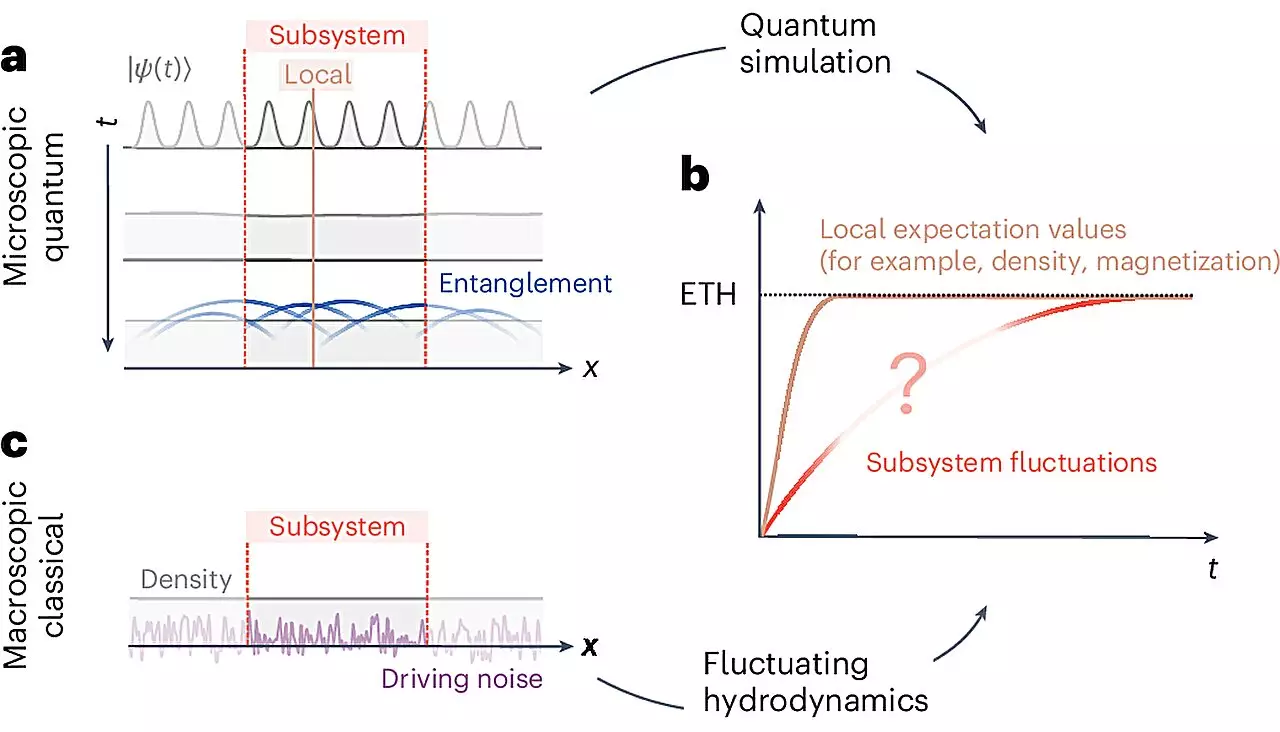The world of quantum physics has always been known for its complexity and unpredictability. However, a recent study conducted by a research team led by Professor Monika Aidelsburger and Professor Immanuel Bloch from the LMU Faculty of Physics has raised interesting questions about whether chaotic quantum systems can be described using simple diffusion equations with random noise. This study, published in the journal Nature Physics, challenges traditional perceptions about the behavior of quantum many-body systems and opens up new possibilities for understanding their macroscopic characteristics.
The concept of hydrodynamics, which involves describing the flow behavior of fluids in macroscopic terms, is a well-established field in physics. However, when we delve into the microscopic world of small particles in fluids, we encounter phenomena like Brownian motion, which are characterized by random erratic movements. These fluctuations, arising from the random collisions of particles with the surrounding molecules, can be described as white noise in the context of fluctuating hydrodynamics (FHD). This theory suggests that the entire behavior of a system may be governed by a single quantity, such as the diffusion constant, even in the presence of complex microscopic interactions.
Quantum systems, with their fundamental differences in interaction laws compared to classical systems, present unique challenges in terms of description. Concepts like uncertainty and entanglement add layers of complexity to quantum dynamics, making it difficult to predict and analyze their behavior. The researchers in this study aimed to investigate whether chaotic many-body quantum systems could also be described using an FHD approach, despite the inherent complexities at the microscopic level.
To explore the behavior of chaotic quantum systems, the research team utilized ultracold cesium atoms in optical lattices and created non-equilibrium initial states to observe the system’s evolution. Through high-resolution imaging techniques, they were able to track the density fluctuations and correlations of the particles over time. The results indicated that FHD could qualitatively and quantitatively describe the behavior of the system, providing valuable insights into the macroscopic characteristics of chaotic quantum systems.
The findings of this study suggest that chaotic quantum systems, despite their intricate microscopic details, may exhibit simple macroscopic diffusion processes akin to Brownian motion. This discovery opens up new avenues for further exploration into the behavior of quantum systems and could potentially lead to the development of simplified models for complex quantum phenomena. By bridging the gap between microscopic chaos and macroscopic behavior, researchers may unlock a deeper understanding of quantum dynamics and pave the way for innovative applications in quantum technology.
The study on the macroscopic behavior of chaotic quantum systems challenges conventional wisdom and highlights the potential for simplifying complex quantum phenomena through the lens of fluctuating hydrodynamics. By applying simple diffusion equations with random noise, researchers can gain valuable insights into the behavior of quantum many-body systems and pave the way for future advancements in the field of quantum physics.


Leave a Reply